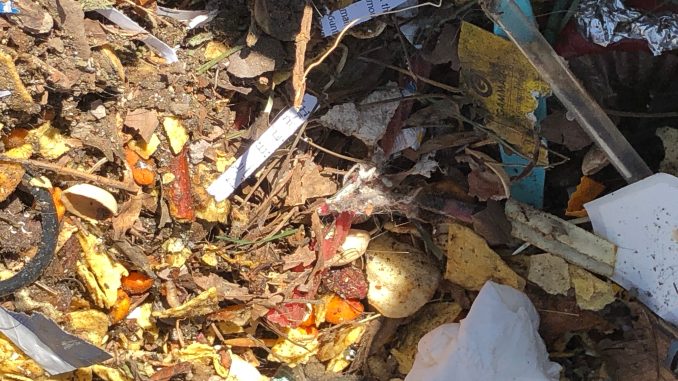
To reduce greenhouse gas emissions, California’s SB 1383, the Short-Lived Climate Pollutant Reduction Strategy, is changing the way we recycle. While these changes may seem daunting, the end goal is a cleaner and healthier Golden State for everyone.
“SB 1383’s main goal is to reduce the amount of organic waste and methane generation in landfills,” explains Damon Robison, recycling coordinator for the City of Oroville. “It’s important because organics in landfills emit 20% of the state’s methane, which is more potent than carbon dioxide. Organics waste makes up about a third of what Californians are throwing away and landfill space is not endless. We will eventually run out of room for our garbage.”
SB 1383
SB 1383 mandates a 75% reduction of organic waste that ends up in landfills by 2025. In Butte County, city and county officials are working together, with local waste haulers and CalRecycle, to develop the necessary infrastructure to meet those mandates.
“We have diverted green waste and yard clippings for many years, almost 26 years here in Chico, and we have composting facilities for that type of organic waste. Like most compost facilities in our region though, they are not permitted to accept food waste,” says Linda Herman, parks and natural resources manager for the City of Chico. “No local facilities can manage co-mingled discarded food and green waste together.”
How it works
SB 1383 aims to divert organic waste to anaerobic digestion and composting facilities where waste is transformed into clean natural gas and compost. It also strives to reduce the amount of edible food that goes to waste by connecting commercial businesses such as grocery stores with food pantries and other hunger relief organizations.
“Food insecurity is also an increasing problem as I’m sure most people in California are aware of, yet as a society we dispose of a lot of edible food,” says Robison. “Reclaiming edible food before it goes to the landfill and making sure it goes to those in need is a two-for-one solution.”
The good it does
In addition to extending the life of landfills, the compost created from recycled organic waste is a valuable soil amendment that retains water, a benefit to drought-prone areas. In post-fire areas, compost is an effective ground cover that prevents erosion, and its agricultural use lessens the need for artificial fertilizers, which can contaminate groundwater.
“SB 1383 is a big change, it’s a heavy lift, but we’re all figuring it out as we go and we’ll all be there to support and make the programs as successful as we can.”
Jennifer Arbuckle
SB 1383 consultant
To ensure compost isn’t contaminated by plastics and other materials, it’s important to separate organic waste from trash and other recyclable materials such as plastic.
“On the municipal level, we do not yet have the programs to collect food and green waste together. We’re working on solutions for our communities and its taking time. ,” responded Valerie Meza, recycling coordinator for Butte County Public Works. “Plastics don’t go away. Once plastic contaminates food waste, and after that gets mixed with green waste, no one will want to purchase contaminated compost.”
When to expect changes
Butte County is served by three different waste haulers, all of which have varying abilities to process different types of materials. Ultimately, the state requires all jurisdictions to be in compliance by March 2024. To learn more about recycling your food waste with the rest of your organic waste, contact your hauler for details.
“Butte County and the other local jurisdictions are working together to find a solution for everybody. We’re all communicating with each other,” says SB 1383 Consultant Jennifer Arbuckle. “SB 1383 is a big change and a heavy lift. We’re figuring it out as we go. We want to develop make the programs we implement as successful as we can. … There’s going to be a learning curve for everyone.”
To find your local hauler, check your bill or visit www.buttecounty.net/recyclebutte/Collection-Areas/Haulers

